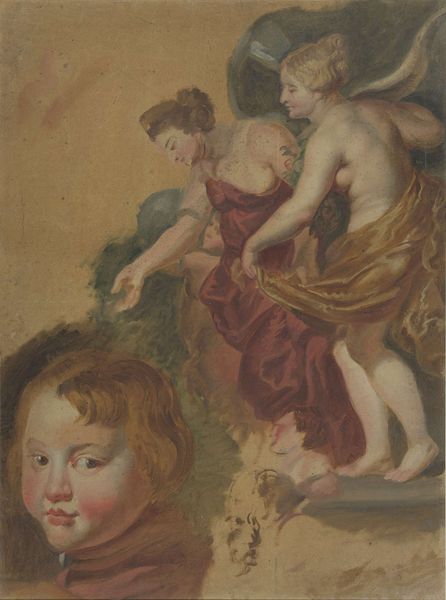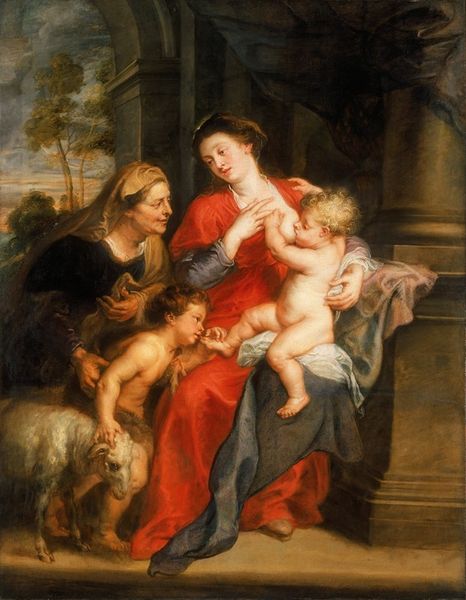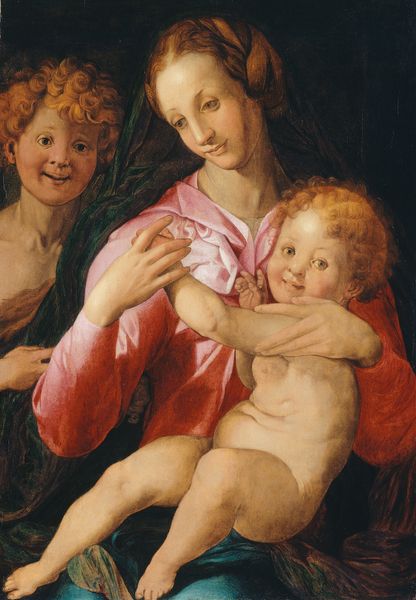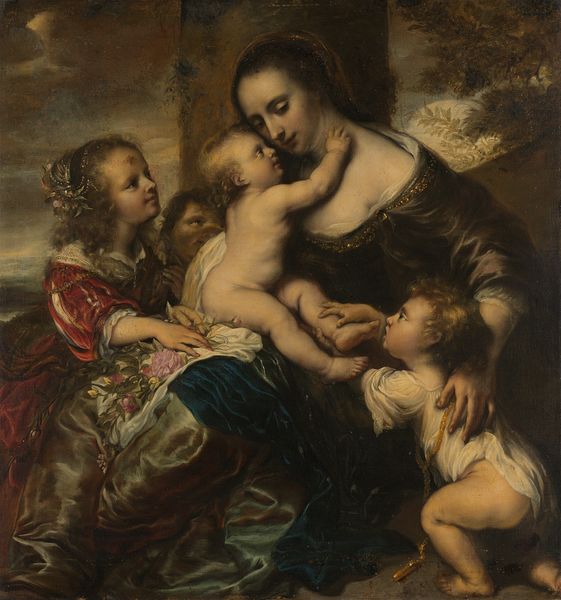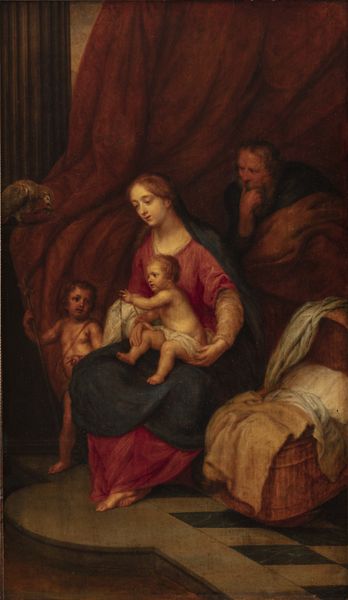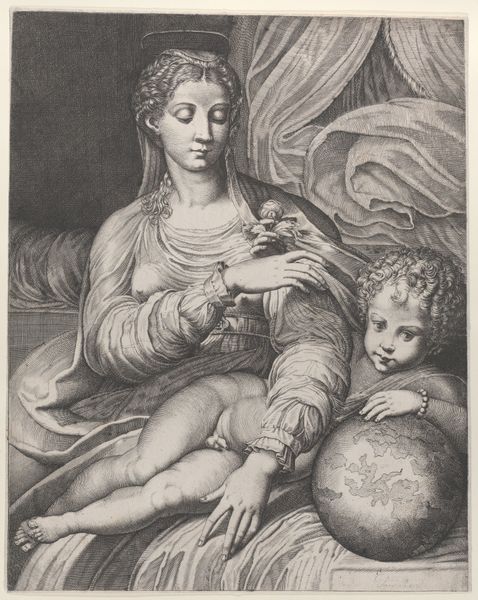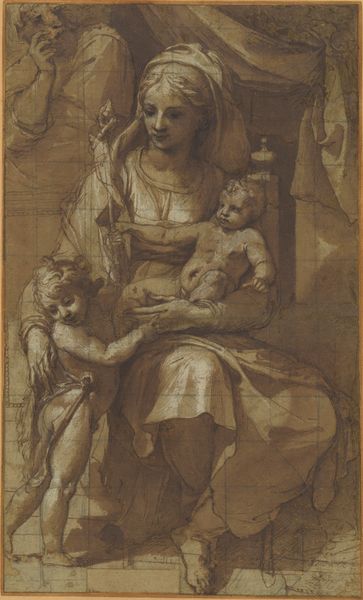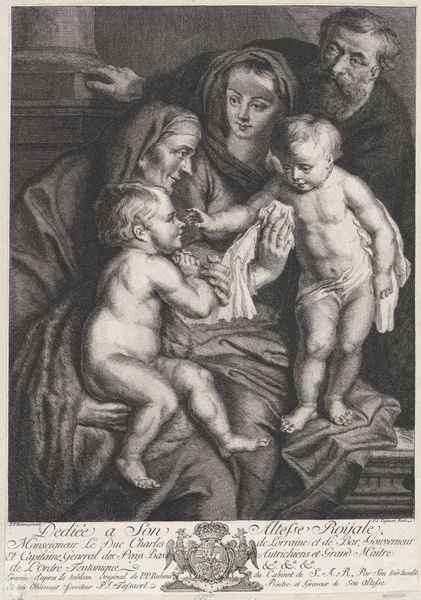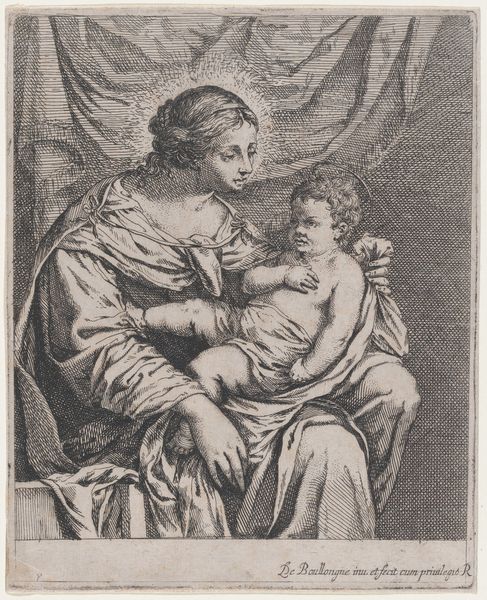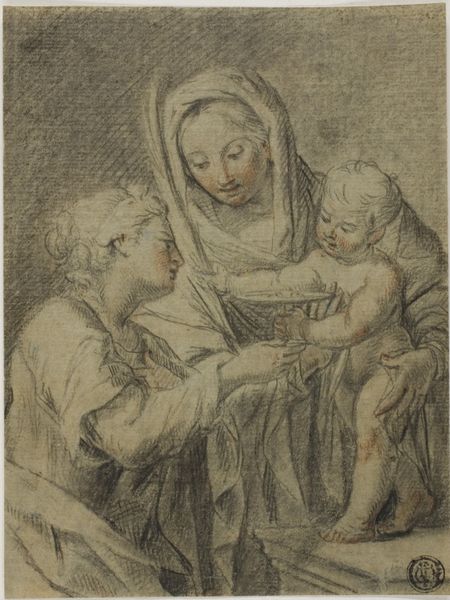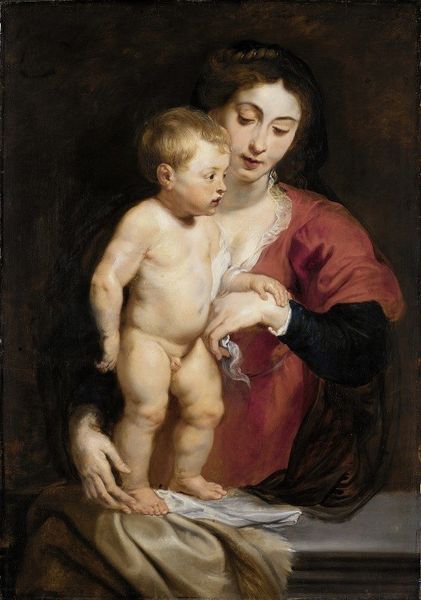
Copyright: Public domain
Editor: Here we have "Mary, John and baby Jesus," painted by Rudolf Ernst around 1875, using oil paints. I’m immediately struck by the contrast between the somber mood and the playful interaction between the children. How would you approach an interpretation of this piece? Curator: Observing the painting through a formalist lens, one notices how the artist uses the composition, color and light to create visual tension. The structure is triangular, grounding the composition with Mary, who is static, but destabilizing it with the dynamic, almost unruly, forms of the children. Ernst manipulates color temperature in interesting ways too; note how the background's cooler hues frame and seemingly recede from the figures’ warmer skin tones and the redness of Mary's garment, drawing the eye forward. Editor: The starkness of the background and the redness you pointed out is certainly powerful! Does the interplay of light and shadow affect your reading? Curator: Precisely. Ernst deploys chiaroscuro to enhance the three-dimensionality of his subjects. But what about the surface quality itself? How does the texture and the visible brushstrokes communicate meaning? The drapery has looser more fluid brushwork than the crisp rendering of Mary's skin for example. These tactile choices contribute to the work’s complex emotional and aesthetic texture. Editor: That's insightful. Focusing on how these elements coalesce really elevates the work beyond its surface representation. Curator: Indeed. Formalism provides a method for understanding how artists like Ernst have shaped material into meaningful form, irrespective of narrative context. Editor: I see that it opens up another pathway to experiencing it. Thanks so much.
Comments
No comments
Be the first to comment and join the conversation on the ultimate creative platform.
